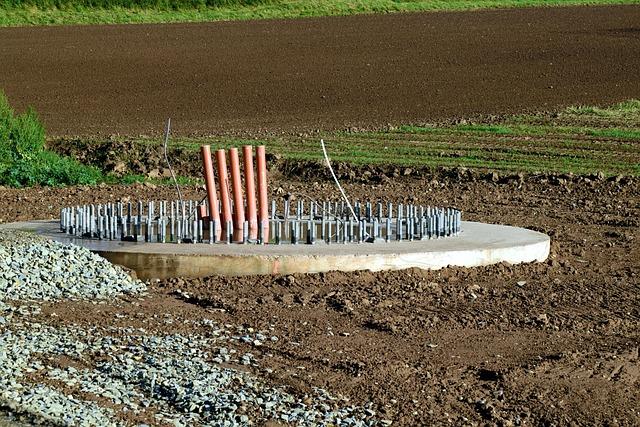Table of Contents
- Understanding the Foundations of a Planetary Ecosystem
- The Interconnectedness of Life: How Species Rely on Each Other
- Climate Change and Its Impact on Planetary Health
- Conservation Strategies for Protecting Earth’s Ecosystems
- Future Innovations: Harnessing Technology for Ecosystem Management
- Q&A
- Final Thoughts

Understanding the Foundations of a Planetary Ecosystem
At the heart of every planetary ecosystem lies a complex interplay of biological, physical, and chemical processes. These fundamental interactions help sustain life and shape diverse environments, from arid deserts to lush rainforests. Key components of these ecosystems include:
- Biotic factors: All living organisms, including plants, animals, fungi, and microorganisms, contribute to the dynamics of ecosystem interactions.
- Abiotic factors: Non-living elements such as climate, soil, water, and nutrients set the stage for how life thrives and evolves within these systems.
- Energy flow: Solar energy is the primary driver, initiating chains of consumption and energy transfer that support food webs.
The stability and resilience of a planetary ecosystem depend on biodiversity, which serves as a buffer against environmental changes. Diversity fosters ecosystem health by ensuring that various species can fulfill essential roles. The interdependencies between species create a web of life, where even the smallest organism can have significant impacts on the ecosystem’s integrity. Some crucial concepts that illustrate these relationships include:
- Trophic levels: The structure of food chains that delineate producers, consumers, and decomposers.
- Niche differentiation: The unique adaptations and roles each species has within their environment.
- Population dynamics: How species populations fluctuate due to resource availability and inter-species interactions.
Furthermore, human activities have increasingly influenced planetary ecosystems, often leading to rapid changes that impact ecological balance. Understanding these effects is essential for fostering sustainable practices. To grasp the broader implications, consider the following variables:
| Human Activity | Impact on Ecosystem |
|---|---|
| Deforestation | Loss of biodiversity and habitat fragmentation |
| Pollution | Alteration of soil and water quality, harming organisms |
| Climate Change | Shifts in species distributions and extinction risks |

The Interconnectedness of Life: How Species Rely on Each Other
The intricate web of life within a planetary ecosystem showcases the delicate balance and mutual dependencies among various species. Plants, animals, fungi, and microorganisms play specific and often critical roles. For example, pollinators like bees and butterflies are essential for the reproduction of many flowering plants. Without these pollinators, the food sources not only for humans but countless other species would dwindle. Similarly, decomposers such as fungi and bacteria break down dead organic matter, returning nutrients to the soil and making them available for new plant growth. This process underpins the health of ecosystems, driving the cycle of life forward.
In addition to nutrition and reproduction, species rely on one another for protection and survival. Certain animals, such as cleaning fish, thrive on symbiotic relationships where they eat parasites off larger fish, providing relief to their hosts while securing food for themselves. An equally important relationship exists between predator and prey. Predators help to maintain balanced populations, ensuring that no single species overwhelms the ecosystem. This filtering process is crucial in preserving biodiversity and ecological health, as seen in ecosystems ranging from tropical rainforests to tundra regions.
The consequences of disrupted interdependence can be profound. When one species vanishes—whether due to habitat destruction, climate change, or other human-induced factors—the ripple effect can lead to cascading failures throughout the ecosystem. A recent study highlighted in a WordPress table illustrates these interconnections, providing insight into what occurs when specific species decline:
| Species Decline | Immediate Effect | Long-term Consequence |
|---|---|---|
| Bee Populations | Decreased pollination | Reduction in plant diversity |
| Large Herbivores | Increased vegetation | Overgrowth and fires |
| Predatory Fish | Surge in smaller fish populations | Altered aquatic ecosystems |
Ultimately, the interconnectedness of life is a reminder of our responsibility to protect and preserve these delicate relationships. Through awareness and conservation efforts, we can help maintain the balance that is essential for the health of our planet’s ecosystems.
Climate Change and Its Impact on Planetary Health
Climate change is a multifaceted issue that poses severe challenges to the health of our planet. Rising temperatures, altered weather patterns, and extreme events like floods and droughts are not merely statistics; they translate to real-world consequences affecting all forms of life. Ecosystems, which include all living organisms and their physical environments, are intricately linked and can be drastically altered by climate shifts. Key feedback loops can exacerbate these changes, leading to habitat loss and diminishing biodiversity.
The impacts are most pronounced in vulnerable ecosystems, such as coral reefs, rainforests, and polar regions. For instance, coral bleaching events occur as ocean temperatures rise, leading to large-scale die-offs, which not only endangers marine life but also disrupts the livelihoods of communities that depend on these ecosystems. Similarly, the melting ice caps threaten species that rely on ice for survival while contributing to rising sea levels that can submerge coastal habitats. The interconnectedness of these challenges means that addressing them requires a holistic approach.
Furthermore, climate change threatens to undermine decades of progress in public health. Vector-borne diseases like malaria and dengue fever may spread to new regions as warmer temperatures expand the habitats of infectious disease carriers. With fragile ecosystems at stake, the importance of sustainable practices and policies becomes increasingly evident. Strategies such as reforestation, promoting biodiversity, and reducing carbon footprints are essential. By fostering resilient ecosystems, humanity can mitigate the adverse effects of climate change, ultimately safeguarding our health and that of future generations.

Conservation Strategies for Protecting Earth’s Ecosystems
The preservation of our planet’s ecosystems hinges on a multifaceted approach that combines science, community engagement, and innovative practices. Protected areas play a crucial role in conserving biodiversity. By establishing national parks and wildlife reserves, vital habitats can be shielded from urban development, pollution, and resource extraction. This not only safeguards flora and fauna but also enhances ecosystem services that benefit human communities, such as clean air and water.
Another significant strategy involves sustainable land use practices. Integrating agriculture with conservation ensures that food production does not come at the cost of ecological integrity. Techniques such as permaculture, agroforestry, and organic farming promote biodiversity while maximizing yields. Additionally, urban planning that incorporates green spaces allows for the integration of nature within human settlements, fostering coexistence between development and the environment.
Community-driven initiatives are equally vital, as involving local populations in conservation efforts promotes stewardship and awareness. Education programs can empower individuals to understand their impact on ecosystems, encouraging practices that reduce waste and promote sustainability. Collaborations between governments, NGOs, and local communities can help in developing conservation plans that are both effective and culturally appropriate. Here’s a brief overview of some community-focused conservation strategies:
| Strategy | Description | Impact |
|---|---|---|
| Engagement Workshops | Interactive sessions to educate communities about local ecosystems. | Higher awareness and participation in conservation efforts. |
| Volunteering Programs | Involvement in habitat restoration and clean-up efforts. | Improved conditions and active community involvement. |
| Wildlife Monitoring | Citizen science projects to collect data on local species. | Enhanced understanding of biodiversity trends and threats. |

Future Innovations: Harnessing Technology for Ecosystem Management
The landscape of ecosystem management is rapidly evolving, driven by cutting-edge technology. Innovative tools are emerging that enable scientists and environmentalists to monitor and manage ecosystems with unprecedented precision. For instance, drones equipped with high-resolution cameras and sensors can capture real-time data on forest health, detect invasive species, and track wildlife movements. This aerial perspective allows for more proactive management strategies, ensuring that conservation efforts are targeted and effective.
Moreover, the integration of machine learning and artificial intelligence is revolutionizing the analysis of ecological data. By processing vast amounts of environmental data, these technologies can identify patterns and trends that might go unnoticed by human researchers. This capability extends to forecasting ecological changes and potential crises, such as the onset of diseases or natural disasters. Smart apps in the hands of field researchers can also facilitate instantaneous reporting, enhancing collaboration among stakeholders and improving response times to ecological threats.
Furthermore, immersive technologies like virtual reality and augmented reality are opening new avenues for education and engagement in ecosystem management. Stakeholders can simulate ecosystem interactions, facilitating effective training for new conservationists. As people visualize the impact of their actions on ecosystems, community involvement increases, leading to more sustainable practices. Investing in such technological advancements not only enhances our understanding but also empowers communities to actively participate in the stewardship of their local environments.



0 Comments